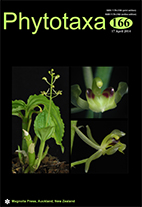Abstract
In order to assess seed morphology 47 species of Miconieae (Melastomataceae) from the Antilles were studied. The majority of these species belong to Calycogonium, a complex genus that has been shown to be polyphyletic, but for which we lack for many species any recent and suitable material for molecular systematics studies. A better understanding of homoplastic versus synapomorphic seed characters may therefore be helpful to illuminate the affinities of such species. Some taxa from Clidemia, Miconia, Ossaea, Pachyanthus and Tetrazygia were also sampled due to their morphological similarities with some species of Calycogonium. Variable seed characters include overall shape and size, raphe shape and size, and testa sculpturing. Based on these characters we grouped the species in five seed types, and an additional three species were found to have distinctive seeds that were not grouped with any other species. Species with identical seed types often belong to more than one genus as currently classified. There are five groups of species within Calycogonium characterized by similar seed morphology but none of the respective seed types is exclusive to the genus. Some of these seed types correlate well with previously proposed subgeneric groups of Calycogonium based on flower morphology and presences and type of leaf domatia. While the occurrence of some seed characters and states matches species groups in Calycogonium also found with molecular phylogenetic analyses, seed morphology generally indicates relationships of Calycogonium and allied taxa of the Caribbean clade that are not completely reflected by the current generic classification. The study provides a matrix for seed characters of the included species that will serve further phylogenetic reconstruction and analyses of character evolution.

